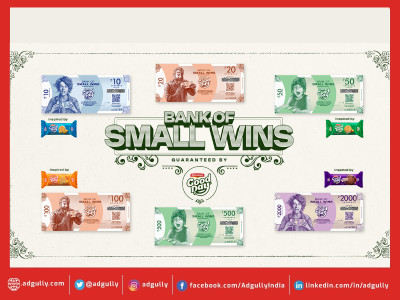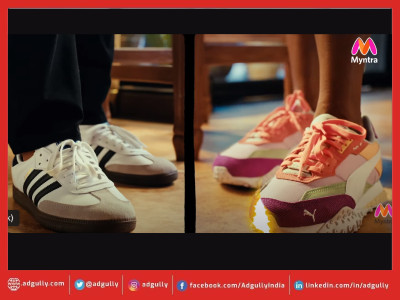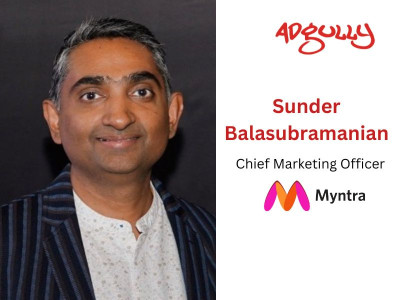Advertisers are still struggling with effective mobile advtg: Martin Nygate
Mobile advertising is becoming central to media strategy in India not only for the new digital companies, but for large traditional conglomerates as well. According to industry estimates, mobile advertising market in India has expanded from a $25 million market in 2011 to $70-$80 million in 2015, which implies annual growth at whopping 60-70 per cent. These days, firms are spending 2-4 per cent of their overall media advertising budgets on mobile ads. The important thing to note, however, is that none of these forms of advertising are effective and the money spent on these campaigns just end up drilling a hole in the company’s pocket without really engaging with the consumers.
This is where an app like Nanu wants to create a disruption by creating a platform where mobile advertising is non-intrusive and manages to reach out to the target consumer. Nanu is a free call app founded by Martin Nygate, Founder and CEO of the Singapore-based VoIP start-up. The company is also set to launch its revolutionary mobile advertising campaign, targeted at brands and media planners to promote its mobile advertising platform.
Nanu recently unveiled the outcome of a targeted survey among a group of Gen X, Gen Y and Millennials from India using smartphones, with diverse work profiles. Amounting to a total sample size of 3,735, 60 per cent of the respondents are annoyed with mobile advertising and marked the adverts as most annoying and obtrusive. However, banners still hold some preference for mobile users due to its unforced nature since approximately 52 per cent of respondents rated banners as least annoying, while more than 55 per cent respondents believed pop-ups and video adverts as the most annoying form of mobile advertising.
In conversation with AdGully, Martin Nygate, Founder and CEO, Nanu, speaks at length about mobile advertising in India, the reasons it hasn’t picked up in a big way, the challenges and opportunities, and more. Excerpts:
Please tell us more about the survey Nanu carried out among the Indian youth using smartphones.
We got over 3,000 responses from people in India. To be honest, the responses didn’t come as a surprise because they really validated what we have known – that advertisements on mobile phones are an irritant. Everyone will tell you that they are fed up of the common forms of advertising on mobile phones – be it banners, pop-ups or videos – as they find them to be intrusive, annoying and not serving any purpose. This was really flushed out and proved in the survey that we conducted here in India.
Could you share some of the key highlights of the survey?
The survey showed what types of advertising were found to be most annoying. There are three types of advertisements on mobile phones – banners, pop-ups and videos. Interestingly enough, banners were found to be the least annoying simply because they were the least intrusive. People don’t even notice the banners anymore as they are found to be very unappealing. The most annoying were the pop-ups.
As per the survey, technically videos on mobile phones are even worse because of the amount of data they are stealing from the users’ data package. According to research done by analysts in the UK, almost 30-50 per cent of the data on mobile phones is been consumed by video advertisements that are completely unwanted. I don’t know whether you have noticed it, but in the last 6-8 months, data usage on mobile phones is sold. While our package usage hasn’t changed, data usage has gone up and this is because of the proliferation of video adverts. Theses video advertisements are buffering and downloading in the back, so even if you don’t watch them you end up paying for that data. Say for example, you have bought 120 MB of data for Rs 30, of this, you will be spending almost Rs 10-Rs 15 to the advertisers for video advertisements that you don’t want. We are simply not aware how bad video adverts are in terms of consuming data on our phones.
So what kind of a format, according to you, would be best suitable for the mobile platform?
Let’s not forget what the mobile phone has been designed for, which is communication. So the best format the audio, now the screen is the by-product of video, and the consumption of video data on mobile phones is astoundingly high.
Given that it is considered an irritant, how can mobile advertising be made more relevant to consumers?
It can be made all relevant if there is more targeting. On laptops and desktops we have cookies, which let the publishers and advertisers know more about your Internet surfing pattern. However, this is difficult to find out on mobile phones as they do not have a similar concept of cookies, hence advertisers make assumptions. For example, there is a technology that says, well if I have three games apps on my phone then I’m probably between the age of 18 and 25 years and I am probably male. Now this is based on algorithms and probability theory. So it takes guesswork and is very inaccurate, but that’s really the only way you could do some form of targeting.
The Nanu app lets advertisers do targeted one to one marketing. There are technologies that are more intrusive and can let people listen into your phone calls and recognise what you are saying. For example, you are talking to your mother and happen to say something that would indicate you are pregnant. You could then be bombarded with ads on maternity and baby products based on some key words in your conversation, which were identified by these technologies. We at Nanu, however, neither use such technologies nor do we advocate their use.
Does app only or app first strategy really work in a country like India? For instance, Myntra’s app only strategy hasn’t clicked as expected and it is now also going the web way.
Businesses like Myntra have a different model altogether. They talk about a communication platform which is mobile first. Why? Because people simply do make calls using mobile phones and by allowing people to make free calls to landlines to any number anywhere in the world, they are actually giving them an option of saving their phone bills. So for Myntra and other fashion retailers or for travel or online aggregators, it still makes sense because their audience is still 50-50 divided between desktops and laptops.
So you think app first strategy works for fashion brands?
It really depends because we have to understand that in many households in India particularly, the only form of digital interface is the mobile phone. They might not necessarily have a television set. Desktop or laptop penetration is also low. If I’m targeting those people, then it makes good sense to use mobile advertising. But it also depends on what your product is and whom you are targeting.


















Share
Facebook
YouTube
Tweet
Twitter
LinkedIn